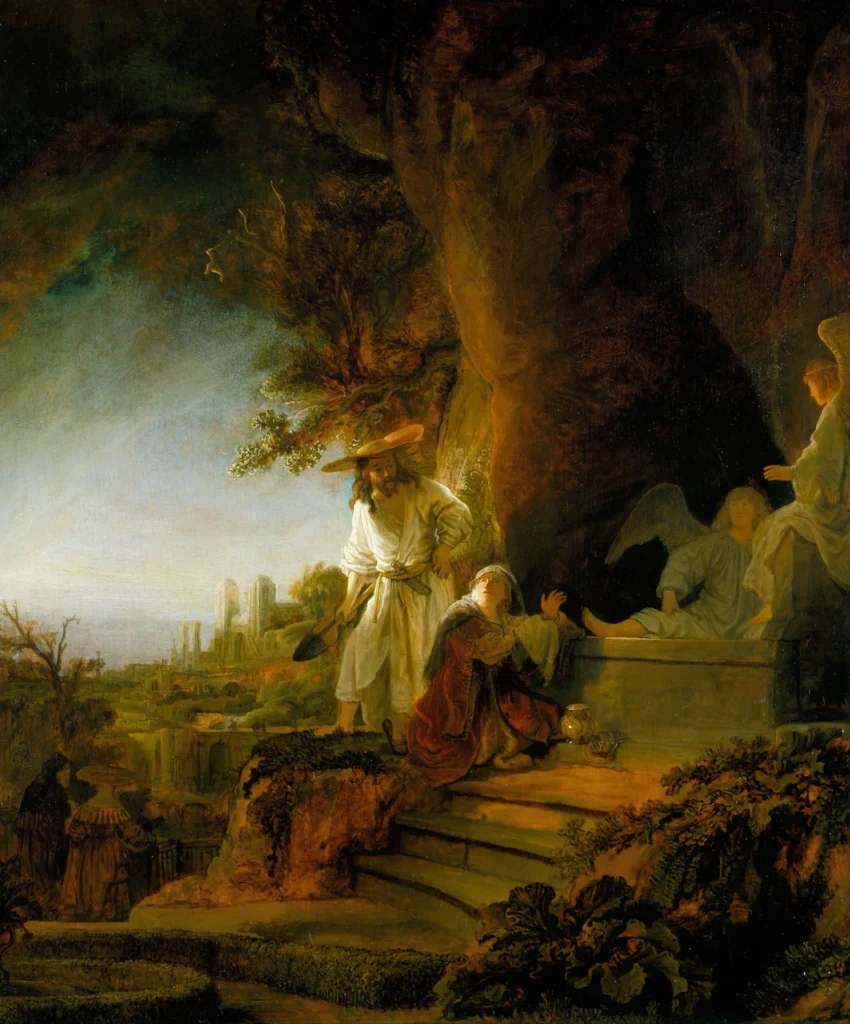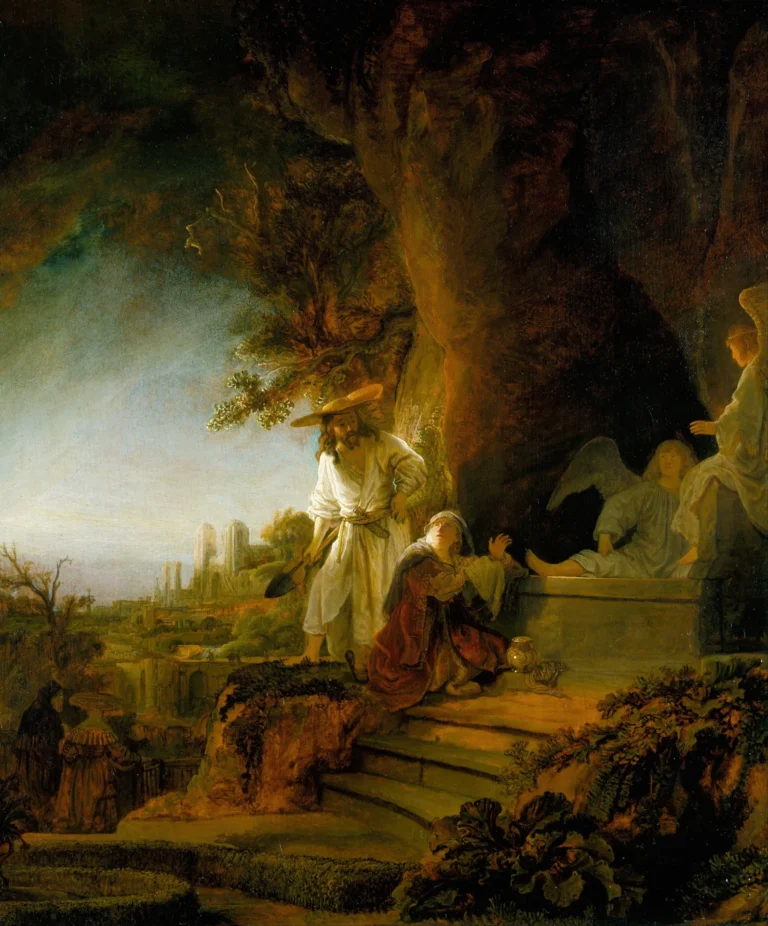Christ and St.Mary Magdalen at the Tomb
In Christ and St.Mary Magdalen at the Tomb. painted in 1638, Rembrandt van Rijn brings to life the moment following Christ's resurrection as Mary Magdalene kneels before him, mistaking him for a gardener. The use of dawn's light enhances the emotional gravity, highlighting not just the figures but also imparting symbolic meaning related to the theme of new life. This small yet masterfully executed work draws viewers into the intimate scene filled with anticipation and recognition.
Year 1638
About the Artwork
Did You Know
Liked what you see? Add it to your collection.
Enjoyed reading? Share it.
... continued
Composition and Setting
The painting depicts the scene from the Gospel of St John (20:11-18) where Mary Magdalene encounters the resurrected Christ, mistaking him for a gardener. The scene is set near the tomb, with Christ standing and Mary Magdalene kneeling, looking up at him. The background includes the Temple of Jerusalem and a tree, symbolizing the link to the Garden of Eden and the new paradise.
Use of Light
Rembrandt's use of light is a hallmark of this painting. The opalescent light of dawn illuminates the figures, highlighting Christ's upper body, Mary Magdalene's face, and the outline of an angel in the tomb. This light is both physically and symbolically significant, representing the transition from darkness to light and from death to life.
Symbolism and Details
Christ is depicted as a gardener, carrying a shovel and wearing a broad-brimmed hat and pruning knife. This imagery emphasizes Christ's role as the cosmic gardener, tending to the earthly garden and preparing the heavenly garden of Paradise. The neatly clipped box hedge in the foreground reinforces this theme.
Emotional and Narrative Focus
The painting captures the moment just before Mary Magdalene recognizes Christ. She is shown looking up at him with an inward glance, while Christ stands quietly, about to call her by her name. This moment of recognition is poignant, as it marks the transition from grief to understanding and faith.
Artistic Technique
The painting is relatively small, measuring 61 x 50 cm, and is executed in oil on panel. The paint is thinly applied, giving the work a nearly monochrome appearance except for the treatment of light and vegetation. The composition is dominated by the vertical form of Christ and the twisting pose of Mary Magdalene, creating a palpable tension.
Significance and Location
This painting is part of the Royal Collection in London and is one of Rembrandt's imaginative interpretations of traditional religious subject matter. It stands out for its unique focus on the moment before recognition, unlike many other works on the same theme which depict the 'Noli me tangere' (Do not touch me) moment.










